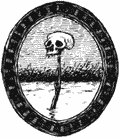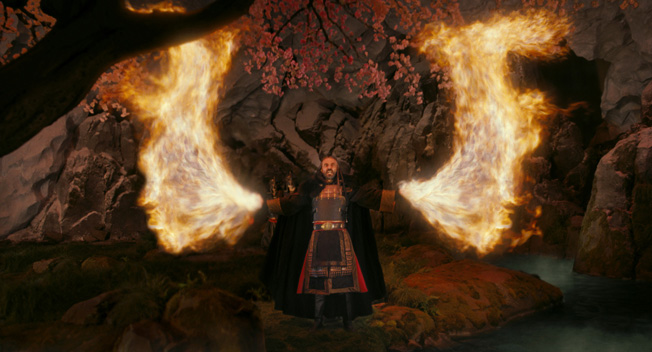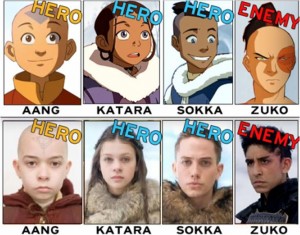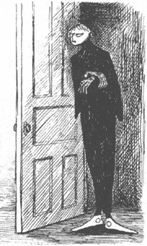I’m back in the saddle, people! And ready for some more ranting. I feel a lot like Iroh there: RAWRRRR!
Let’s dive right in. The sheer amount of fail Twistalan packed into “The Last Airbender” did not miss the amazing mythology from the original series. And, because the series’ mythology and world are so racially diverse and gender-equitable, mucking up the mythology meant mucking up race and gender too.
Let us consider the opening of the film, which is clearly SUPPOSED to be the same as the opening of the show. The four bending styles are shown, one after the other, a single bender doing a move with a plain back drop showing the appropriate hanzai characters behind them. One of the benders (the Firebender, interestingly) is female. Woo!
In the film, the characters are vaguely Asian squiggles, not actual characters, and all the actors are men. Because, yanno, those fragile little wimmen can’t be benders like the big, strong men! This intro also gives us our first view of the new style of bending in the film: lots of dancing and then a totally unrelated movement of the appropriate element. (more ranting on this subject in a future post!) BLARGH.The opening isn’t the only time women are given short shrift in the film. Twistalan’s genderfail is a huge issue. One of the awesome things in the show is that Katara is an incredibly powerful Waterbender. She gets very angry at Sokka in the premiere episode, for example, and her anger starts bending the ice around them, unearthing Ang’s ice sphere. She battles a Waterbending master of the Northern Water Tribe when he refuses to teach her (female benders in the Northern Tribe are only taught healing, not combat bending). She doesn’t beat him, but she isn’t a pushover, and impresses him enough that he teaches her in spite of the cultural prohibition. By the time they leave the North Pole, she’s a master-level bender.
In the film, her bending is a joke — literally. She’s an incompetent bender and there are voiceover snarks about it. She never improves because the entire plotline about her studying with the Northern master is cut. Even setting aside the glaring sexism of the change, her amazing Waterbending powers are very, very important later in the series.
I can only pray that no sequel is made. Twistalan would probably make Toph (a 12-year-old Earthbending prodigy) a boy or something.
Oh, and one nice little thing my good buddy Overlithe pointed out: all the female characters nearly always have their robes tied in the way that means they are dead. Right side over left side. Not the guys, though. One must wonder whether this is commentary on Twistalan’s part (he might as well have killed off all the female characters, considering that he either made them into men or wrote out all their strength) or just his complete and utter ignorance about Asian cultures showing yet again.
Furthermore, as the film progresses, it becomes increasingly obvious that Twistalan either didn’t notice or completely disregarded the correspondences between the four nations / elements and their personalities and seasons. In the film, it’s stated that water is the “emotional” element, and that Ong has trouble bending it because he’s not letting himself feel his grief over losing his people. This is utterly ridiculous! In the series, as in most Asian mythology, fire is the emotional element. Water is about flexibility and flow, not emotions. Twistalan also missed that the Earthbenders are stalwart, stubborn people — like the rocks they can heave at you with their bending abilities. In the film, the Earthbenders are so easily defeated that they have to be told there is Earth beneath their feet they could use against their Fire Nation captors! ARGH. The seasonal associations (e.g., Fire: Summer) are completely gone, which is a shame.
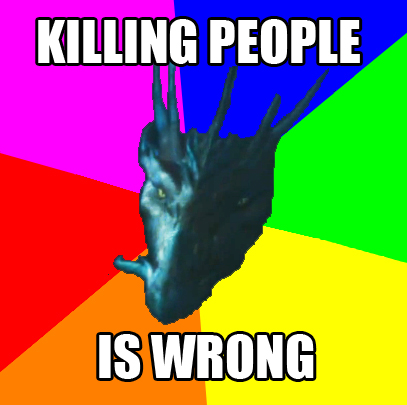 And hoo boy, the spirit world? Totally messed up. The show takes a very practical, Shinto-style view of the relationship between the human world and the spirit world. Everyone knows spirits exist, and the spirit world is a place you can physically go (as when a bunch of people are getting kidnapped by a vengeful nature spirit). In the film? The spirit world is the place the Avatar goes when he’s (it’s always a guy; we briefly see a statue of Avatar Kyoshi, and she is magically a dude in the film. More genderfail!) in the Avatar State. When the Avatar is sufficiently freaked out, he gets all glowy and his spirit leaves his body and goes to talk to a dragon in the spirit world. The dragon has lots of good advice, like that the Avatar powers aren’t for killing people. Thanks, dragon! (Of course, Ong has to be told this because, unlike Aang, he’s not a pacifist. He’s a scary little Child of the Corn shit.)
And hoo boy, the spirit world? Totally messed up. The show takes a very practical, Shinto-style view of the relationship between the human world and the spirit world. Everyone knows spirits exist, and the spirit world is a place you can physically go (as when a bunch of people are getting kidnapped by a vengeful nature spirit). In the film? The spirit world is the place the Avatar goes when he’s (it’s always a guy; we briefly see a statue of Avatar Kyoshi, and she is magically a dude in the film. More genderfail!) in the Avatar State. When the Avatar is sufficiently freaked out, he gets all glowy and his spirit leaves his body and goes to talk to a dragon in the spirit world. The dragon has lots of good advice, like that the Avatar powers aren’t for killing people. Thanks, dragon! (Of course, Ong has to be told this because, unlike Aang, he’s not a pacifist. He’s a scary little Child of the Corn shit.)
Now, let us consider this. Is it useful for the Avatar, the single most powerful human on the planet, to go farting off to the spirit world whenever he gets panicky? How is this helpful? What if he’s panicky because he’s under attack? In the show, the Avatar State is all about him getting way, way more powerful and having all the know-how of all his past lives at once. He enters the spirit world through meditation! In fact, the Avatar is supposed to be a bridge between the spirit world and our world — he helps the two sets of beings get along, and is sort of an otherworldly detective/cop when things are going poorly. All of that is left out of the film, largely because Twistalan missed the part where the Avatar’s role is about peacemaking and healing. Missed it, or willfully ignored it. Either way, he turned what was originally a difficult, draining, stressful, necessary job (just call the Avatar the cosmic janitor!) into a Big Damn Hero kind of job. FAIL.
As for the racefail, the good folks over at Racebending.com have summed it up better than I probably can. In fact, they made this incredibly handy little image which sums up pretty much the entire situation:
The two most glaring changes are Katara and Sokka, who miraculously become white in the film. The entire Fire Nation, though? Played by dark-skinned folks. Cos, yanno, they’re the bad guys, so it’s okay if they’re ethnics or something. Considering that Twistalan himself is Indian, I expected better of him. Jerk.
So. There’s my rant on the mythfail, genderfail, and racefail in The Last Failbender. Coming up next time: the astonishing visual shittiness of the film!

